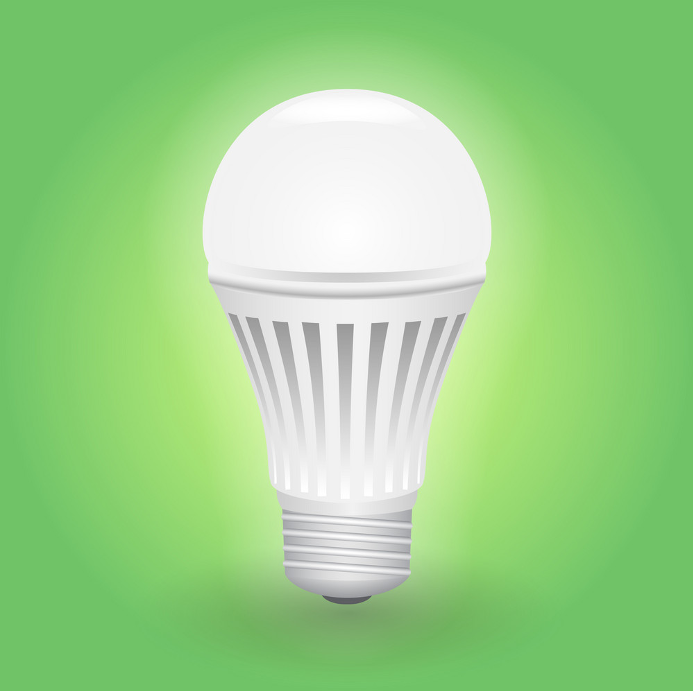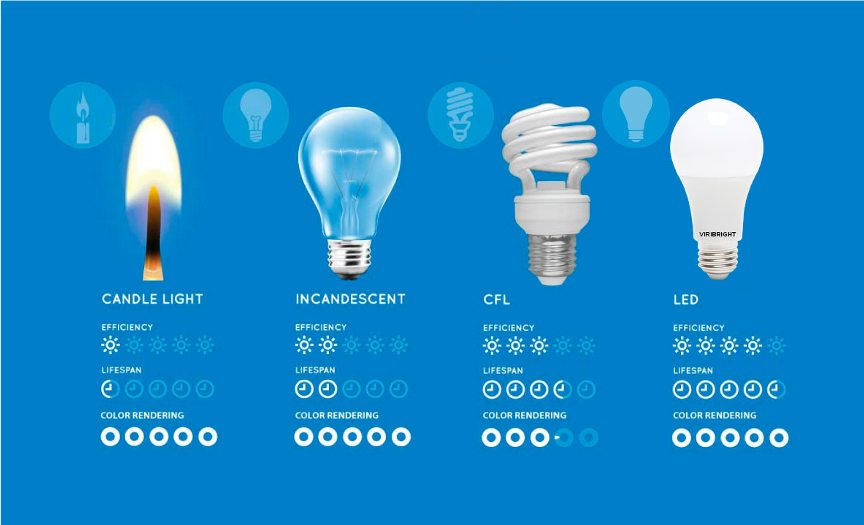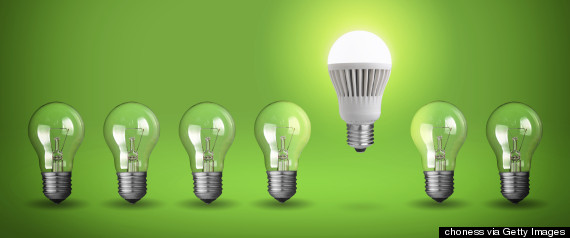As a residential solar energy provider, we are focused on posting information that keeps our readers up to date on all the benefits of buying, owning, and maintaining a residential solar system. We also use these blog posts to show who we are as a solar company and how our mission at Shop Renewable Energy is to improve the day-to-day lives of homeowners. One thing we’ve realized is that every homeowner loves to save money and help the environment, which is why we’ve chosen to focus today’s post on a common question:
Do LED light bulbs really make a difference?

LIGHT BULB BASICS
Before we jump into the overall value of an LED bulb, it’s important to understand what types of bulbs are available on the market. The three most common light bulbs available to homeowners are incandescent, CFL, and LED.
Incandescent bulbs:
- Invention date – 1889
- Current Price – ~$1
- Efficiency – 14 Lumens per Watt
- Lifetime – 1,000 hours
- Pros – Very cheap, can control brightness, white lighting
- Cons – Most inefficient, most costly over lifetime
Compact Fluorescent Lights (CFL):
- Invention date – 1976
- Current Price – ~$1
- Efficiency – 73 Lumens per Watt
- Lifetime – 10,000 hours
- Pros – Relatively cheap, efficient, and long lasting
- Cons – Take a little time to get bright, cannot control brightness, contain mercury, twisty shape makes them difficult to dispose
Light Emitting Diode (LED):
- Invention date – 1962
- Current Price – ~$2
- Efficiency – 70-120 Lumens per Watt
- Lifetime – 10,000 hours
- Pros – Can control brightness, have multiple shape options
- Cons – Most expensive

MORE EFFICIENT, BUT MORE EXPENSIVE…
It’s clear that LED lights last longer, are more efficient, have controlled brightness, and have multiple shape options, but are they worth the price? Yes. While replacing all your incandescent or CFL bulbs with new LEDs might take a hit to your bank account, it’ll save you money in the long run. According to Energy Star, the average American home uses 40 light bulbs. With the average cost of electricity in the USA being 13 cents per Kilowatt hour, a 40 light bulb house, using 60-watt incandescent bulbs for 4.5 hours a day, will spend about $512 on electricity usage in a year. By making the switch to LED bulbs, a homeowner will reduce that yearly electricity cost to about $94. Thus, the 40 new LED light bulbs will pay for themselves within the first year and keep saving the homeowner money over their 15-year lifespan.
MORE EFFICIENT, AND BETTER FOR THE ENVIRONMENT
We all love to save money but helping the environment can also be an important influence in our home-improvement decisions. Luckily, LED light bulbs benefit the environment in several ways. They reduce waste; the amount of light produced by one LED bulb is equivalent to 5 CFL bulbs, or 30 incandescent bulbs. LED Bulbs also help reduce your carbon footprint because they are much more efficient. If every US household changed just one incandescent bulb to LED, it would be like planting 400,000,000 trees or taking 800,000 cars off the road. One might suspect that most homeowners have already made the switch to LED, but there are still 1.5 billion incandescent bulbs in use. So, if you’re still using incandescent bulbs, make the switch today to help the environment and save money.

THE SHOP RENEWABLE ENERGY WAY
Shop Renewable Energy wants to help homeowners across the country save on their electricity bill, which is why it is our goal to educate the public on why they should make the switch to LED lightbulbs. In fact, many of our partners offer new customers a smart thermostat and 20 LED lightbulbs to help them save even more money and make an impact on the environment. To see how much you could save by going solar, check out our get a free quote tool:
